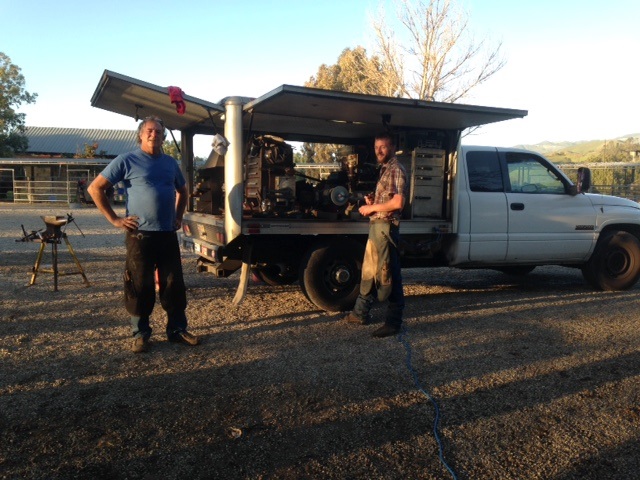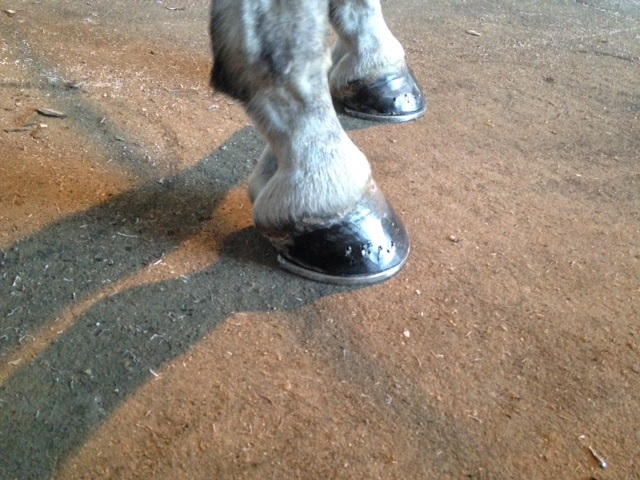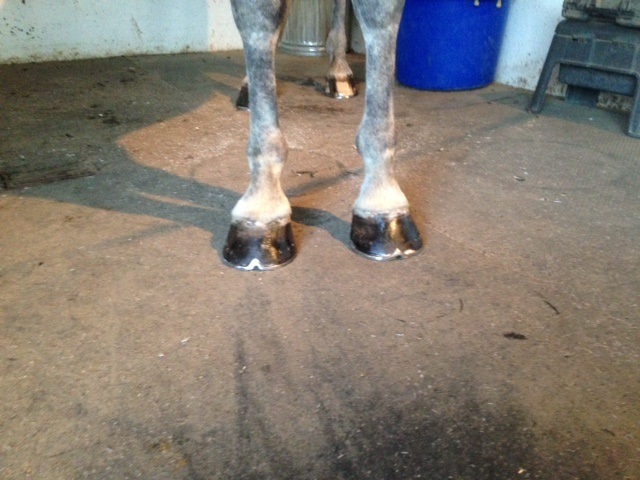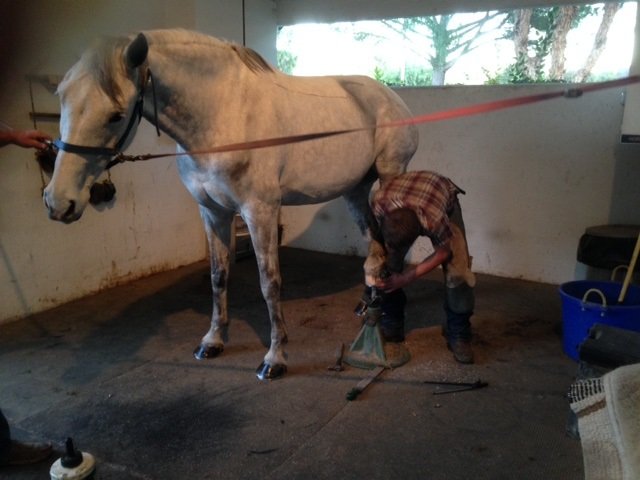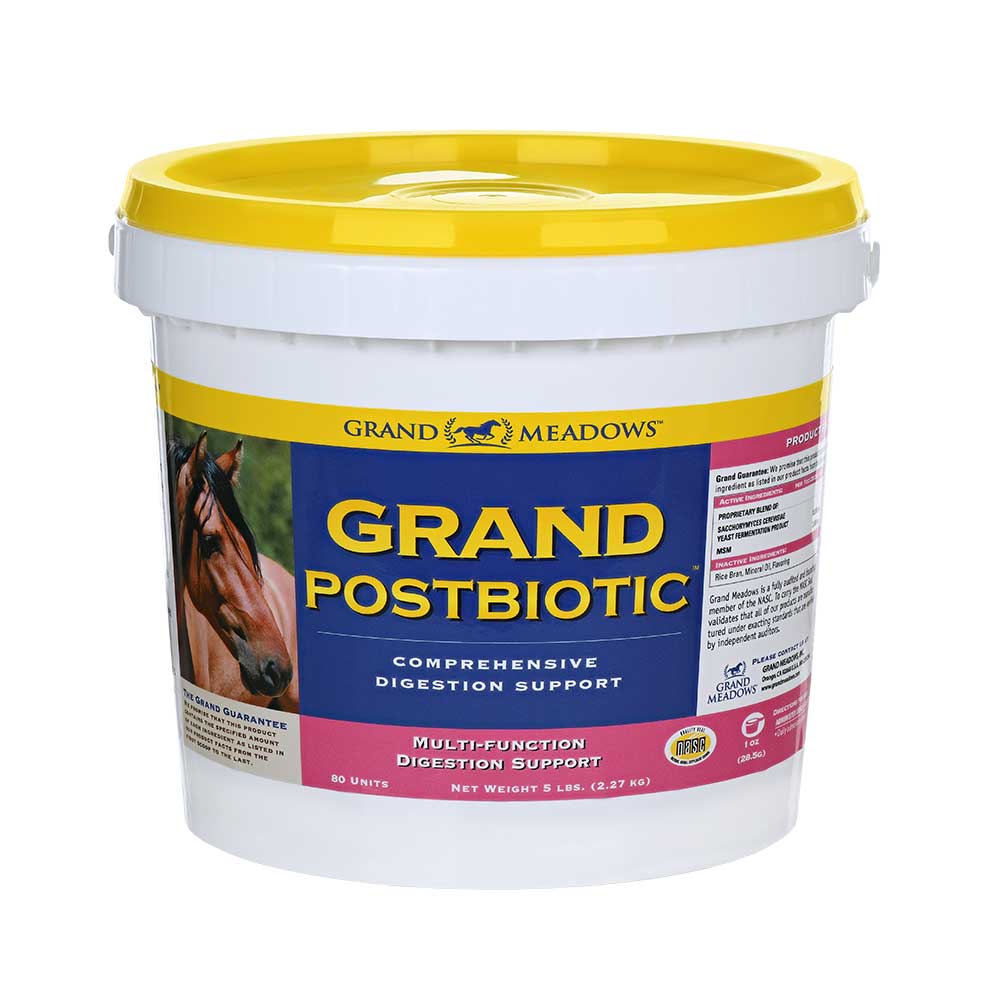Horse Health
7 Ways to Maintain Your Horse’s Hoof Health
Besides being the month of love, February is International Hoof-Care Month. Any horse person is familiar with the phrase, “No Foot, No Horse.” And how those words ring true! We spend a lot of money, time, study, and effort on what we can do to ensure our horses have the best feet possible – everything from buying hoof care supplements, topical concoctions, and protective boots, to paying our farriers for regular care. I decided to ask an expert about the most important things we as horse owners can do to ensure hoof health.
I caught up with Certified Journeyman Farrier Tyler Davis and his assistant Albert Gregg. Having worked closely for many years with veterinarian Dr. Charlie Boles, he has seen almost every possible problem a horse can have concerning their hooves and here is what he had to say.
#1 – Pick your horse’s feet.
Every day. Every ride.
“Owners that handle their horses daily get to know their horses’ hooves and what is normal or abnormal for them,” Davis said. “Catching a problem right away can be the difference between a little problem or a big problem.”
#2 – Assess your horse’s hoof health to develop a baseline.
Monitor heat in hooves and get to know what is normal for your horse. Learn to check for digital pulses, which can be a sign of laminitis, lameness, abscess. Check for cracks, as some are superficial, but others can be a problem. Inspect nails, clenches and shoes, and check it is not sprung (lifted) or loose. Check for any abnormalities in the sole and frog, and be aware of any strong smell, which could potentially mean thrush. If you suspect thrush, ask your vet or farrier right away and treat with a product they recommend. Be aware of abscesses or soft spots on the soles, or on the outside of hooves as far up as coronet band. Check for rocks and any foreign objects that may have become embedded in the hoof, such as a nail or fence staple. If you suspect a puncture, contact your vet immediately so you may determine how deeply it is embedded and the best way to treat it.
#3 – Try to keep your horse’s hooves dry.
Constant rinsing, bathing, and drying of horses hooves can affect hoof quality. If you do rinse your horse often, try to allow the horse to dry in the sun before returning it to a dark or damp stall. This type of expansion from moisture and contraction from drying is also a problem for horses living in muddy paddocks during rainy season, or in the summers for horses turned out at night in damp grass pastures and brought into stand in their dry cool pens during the heat of the day.
#4 – Consider topical products.
It can help to seal the horses hooves with a protective sealant such as Tuff Stuff or one of the many other products on the market such as Hoof Alive or Rain Maker, before you plan on getting them wet. Just don’t apply topical products to hooves before your farrier is planning a visit, as it will make his or her job much harder. Also, cnstant or daily applications of hoof oils can actually be drying to hooves. Be sure to check with your farrier about a product they have had success with. This would be true of thrush and white line treatments as well as sole hardeners – every farrier has their own favorite products.
#5 – Feed a good quality supplement and give it adequate time to show you results.
While you may see some difference within a few months of starting a horse hoof supplement, it really takes a year to see the full impact. Davis acknowledges that a large part of hoof quality is genetic, but that he has seen results when customers have fed different products to help with hoof health. :earn more about how supplements impact hoof health, and for further reading, check out Hoof Supplements: Feeding the Foot by Heather Smith Thomas.
#6 – Ground Manners: Make sure your horse has them or have a plan for them to be enrolled in Charm School.
Farriers cannot do their best work when they are dodging hooves or teeth. Work with your horse’s feet daily to get them used to being picked up, and make sure they will hold and keep them up. If you have trouble, enlist the help of a trainer – seriously! Farriers, vets and other professionals who work around horses do not appreciate hearing, “Oh, I forgot to tell you…” after your horse has taken a taste of their arm or love tapped them with their hoof. I cannot stress this enough. I can assure you our experts used more colorful language regarding this subject.
#7 – Find a farrier that you trust and stick with them.
Give your farrier a chance to help shape and influence the health of your horse’s hooves, paying careful attention to angles, medial and lateral balance, breakover, shape, etc. A good farrier, whether your horse is shod or barefoot, will keep your horse on a regular schedule in order to prevent hooves from becoming too long, out of balance or developing cracks and chips. Ask for referrals, a good farrier will have no trouble providing you with the names of loyal clients.
We hope that helps you protect your horses hooves, especially with International Hoof-Care Month to raise awareness! Tell us in the comments if you have any special tips we didn’t cover here on how to preserve the health of horses’ hooves!

